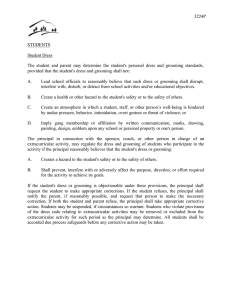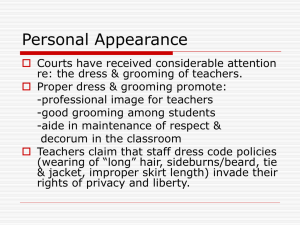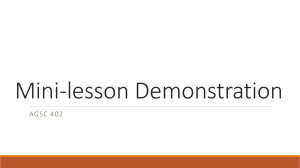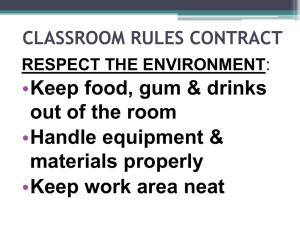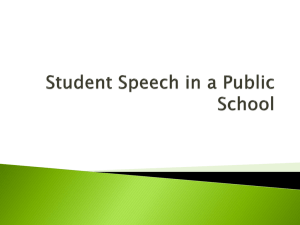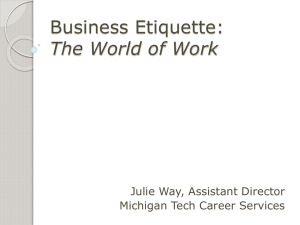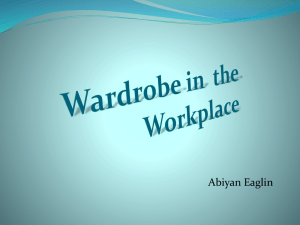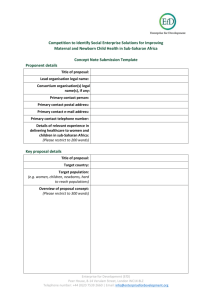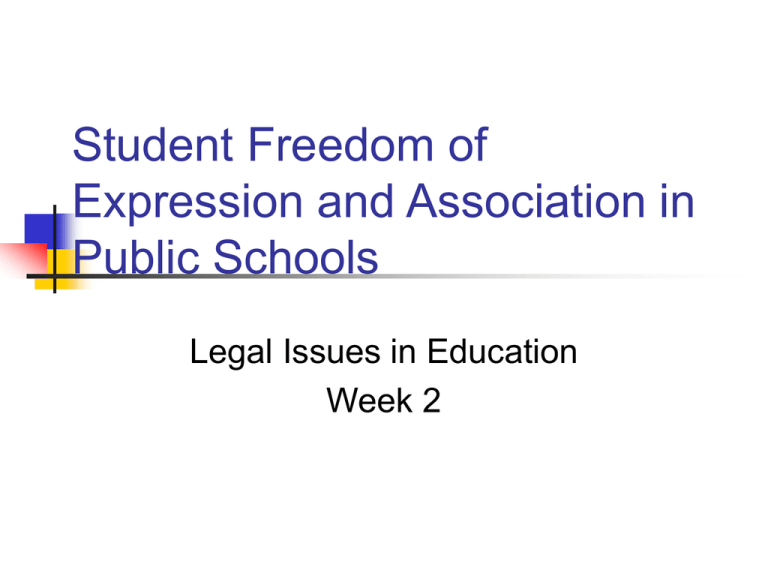
Student Freedom of
Expression and Association in
Public Schools
Legal Issues in Education
Week 2
Outline
Student Freedom of Speech
Hate Speech Codes
Student Freedom of Press
Student Freedom of Association
Student Dress and Grooming
Case Briefing Exercise
Student Freedom of
Expression
Issue: Hateful, provocative and
offensive speech: What can and cannot
be banned? Library Censorship: Is there
a student right to know?
Class Questions
Can schools legally limit student
expression or symbolic speech?
Do school officials have to wait until a
disruption has occurred before acting?
Can demonstrations be prohibited near
the school grounds?
Are fighting words protected by the 1st
Amendment?
Student Freedom of Speech
Tinker v. Des Moines, 393 U.S. 503
(1969)
Pyle v. South Hadley, 861 F. Supp. 157
(D. Mass. 1994).
Activity: Greenhouse Article
Tinker Case
Issue: Does freedom of speech apply to
students in the classroom?
Rule: The First Amendment applies to public
schools, and thus administrators have to
demonstrate constitutionally valid reasons for
any specific regulation of speech in the
classroom. It is unconstitutional to prohibit
students’ freedom of expression, unless there
is evidence that a forbidden expression would
materially and substantially interfere with the
works of the school or the rights of others.
Limitations to Tinker Doctrine
Subsequent Court decisions have determined
limitations on the scope of student free speech
rights. In Bethel School District v. Fraser, a 1986
case, the Supreme Court held that a high school
student's sexual innuendo–laden speech during a
student assembly was not constitutionally protected.
While the Fraser court distinguished Tinker, the
Fraser court carved out an exception for "indecent"
speech. Hazelwood v. Kuhlmeier, the court ruled
that schools have the right to regulate, for legitimate
educational reasons, the content of non-forum,
school-sponsored newspapers.
Pyle v. South Hadley Case
Issue: Whether, under Mass. Law, public high
school students are free to engage in any
expression they choose, even if deemed
vulgar by the school, so long as the speech is
neither disruptive nor school-sponsored.
Holding: Massachusetts law protects
students’ rights to engage in vulgar, nonschool sponsored speech so long as it does
not cause a disruption at school.
Class Activity
Administrative Guide
School officials may restrict freedom of
expression where…..
Buttons, pamphlets, and other insignia may
be banned if….
Is fear and apprehension of disturbance
grounds to restrict freedom of expression?
Class Activity Results
School officials may restrict freedom of
expression where there is evidence of
material and substantial disruption,
indecent or offensive speech, violation
of school rules, destruction of school
property, or disregard for authority.
Class Activity Results
Buttons, pamphlets, and other insignia
may be banned if the message
communicated is vulgar or obscene, or
mocks others based on race, origin,
sex, or religion. School policies that
address these issues should be
developed and communicated to
students and parents.
Class Activity Results
Unsubstantiated fear and apprehension
of disturbance are not sufficient grounds
to restrict the right to freedom of
expression.
Hate Speech Codes
General Rule: Hate speech codes are
constitutional so long as they are
narrowly tailored to prohibit unprotected
speech such as fighting words, threats,
intimidation, or speech that cases
substantial disruption.
Student Freedom of the Press
How free are students to distribute
unpopular or controversial views in
school-sponsored and underground
publications?
Class Activity: Taylor Article
Student Freedom of
Association
Issue: Should students be free to
organize demonstrations, religious or
gay student organizations, fraternities,
or radical political groups in school?
Basic Rules
Schools have the authority to restrict student
social organizations that try to create
“exclusive” membership.
Schools are permitted to regulate or restrict
student organizations by requiring them to
follow reasonable regulations to ensure that
school facilities are being used responsibly
and equitably.
Basic Rules Contd.
Student groups failing to comply with school
regulations can be disciplined and barred.
Schools may refuse to recognize a student
organization if there is evidence that the
group is likely to be disruptive, break
reasonable rules, interrupt classes, or
substantially interfere with other students’
rights.
Basic Rules Contd.
All student groups must be treated
equally when seeking school
recognition and cannot be discriminated
against because of their viewpoint.
Student Dress and Grooming
In general, the courts have found that grooming
requirements are a reasonable way for school
authorities to teach hygiene, instill discipline, and
compel uniformity. While students are under the
control of school authorities, the students may be
required to follow certain grooming and dress
code rules.
Student Grooming Contd.
Some courts have upheld school
policies that require students to wear
designated uniforms and not to wear
low-necked dresses or immodest styles
of dress. Generally, the regulations
must promote orderly conduct of the
educational process and must not be
arbitrarily applied.
Student Grooming
Administrative Guide
Local school dress codes should be approved by
the school board.
Policy should be communicated and discussed
with students and parents.
Dress codes will be supported by the courts only
when there is evidence that they are reasonable.
Appearance that does not conform to rudiments of
decency may be regulated. Examples?
Dress that mocks others on the basis of race,
gender, religion, color, national origin prohibited.
Method for Analyzing Cases
Read the opinion carefully
Identify the holding
Identify the issue
Identify the rule
Identify the facts
Identify the reasons and policies
In multiple issue cases analyze each issue
separately

